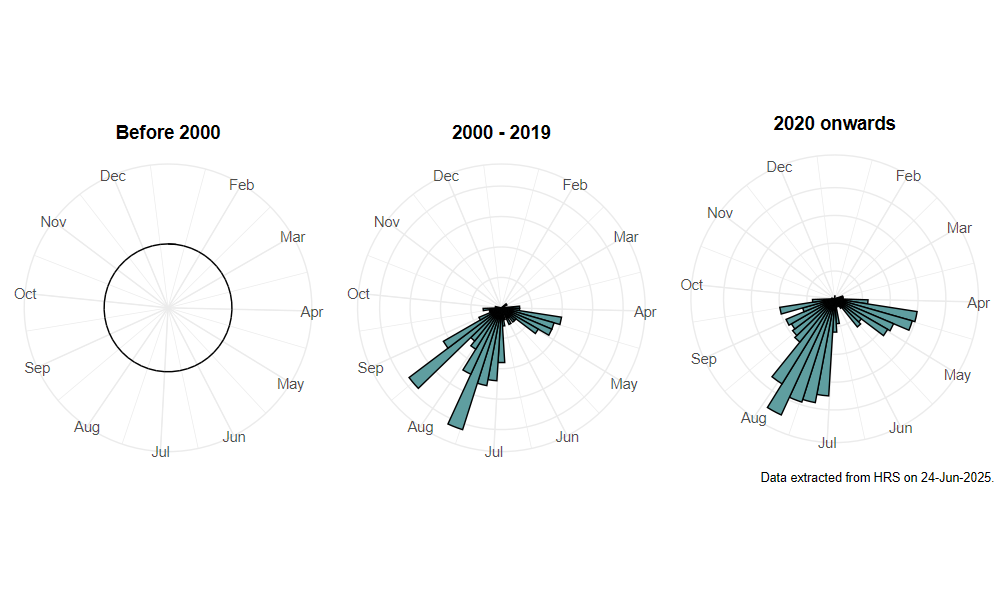Cheilosia caerulescens (Meigen, 1822)
Identification
Identification difficulty = 3. ![]()
![]() according to Ball & Morris, 20241
according to Ball & Morris, 20241
Biology
The larva mines the leaves of houseleeks, mainly Sempervivum tectorum but also more rarely in S. montanum and S. arachnoideum. It has also been claimed to occur in other species of Rosaceae and Asteraceae. The egg is inserted between the leaves into the heart of the rosette of the plant. Older larvae can completely empty a leaf within a day before moving onto another one. Small rosettes can be killed completely and the fly is considered as a pest by gardeners! The larva pupates in the soil below the plant. In Europe, C. caerulescens is bivoltine with larvae commonest in June and again in August/September and with adults flying in May and July.
Flight period
The following plots show the number of unique records per week excluding those reported to be of immature stages.

Status
Added to the British List by Collins & Halstead (2008)2.
Distribution
This species is likely to have been imported by the horticultural trade in plants from growers in Holland where C. caerulescens is well established. It is possible that widely disparate populations reflect multiple instances of infected plants being imported. Since it was first noted in 2007, it has become widespread in England, but continues to spread westward and northwards. Most records come from photographs, often of flies found sitting on house windows or visiting garden flowers.
